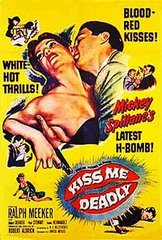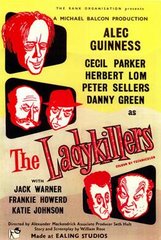"Post-1980 time travel films like The Philadelphia Experiment (1984) and Back to the Future (1985) are obliged to feature the gag in which a disbelieving inhabitant of a naive past discovers that Ronald Reagan is in the White House. 'And who's Secretary of the Treasury,' Christopher Lloyd asks Michael J. Fox, 'Jack Benny?' The joke, persisting well after the Reagan presidency in Late for Dinner (1990), comes from an awareness that a film-goer of the 1940s or 1950s would be unable to conceive of a future in which a second-string movie star is President. Though the New Hollywood is increasingly self-aware, as witness the inside approaches of The Player (1992) or Last Action Hero (1993), no time travel film dares suggest that a 1940s film-goer warped into any year after 1977 would find it ridiculous that Star Wars (1977, derived from Flash Gordon), Superman (1978), Raiders of the Lost Ark (1981), or Dick Tracy (1990) were big-budget, A-ticket movies. The originals of these properties were despised, marginalized efforts, creeping out of 'poverty row,' playing to children at Saturday matinees. As a new generation of baby-boom executives take control of the product, time-travellers from the 1960s would now face the spectacle of a future in which the throwaway media of their own time has been reincarnated in major studio reruns of Batman (1989), The Addams Family (1991), The Fugitive (1992), and Maverick (1994). . . David O. Selznick and Louis B. Mayer would never have considered making the films which constitute Variety's current box-office top ten, though they would have understood Gandhi (1982) if Paul Muni had been available. Even if Beverly Hills Cop (1984) or Ghostbusters (1983) had been green-lighted in the golden age of Hollywood, they would have been double-bill fillers with Abbott and Costello or the Bowery Boys."
Kim Newman, in Oxford History of World Cinema, p. 509
Saturday, March 31, 2007
Subscribe to:
Post Comments (Atom)



















No comments:
Post a Comment